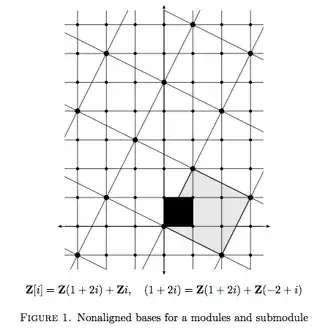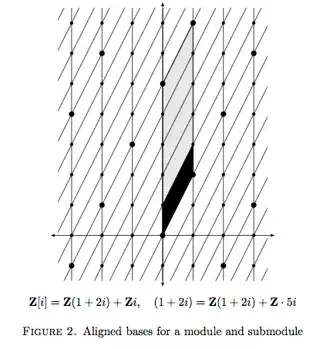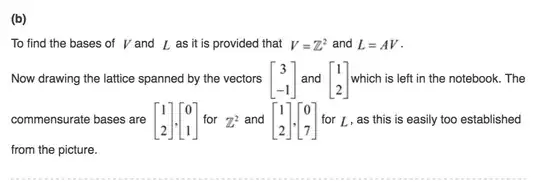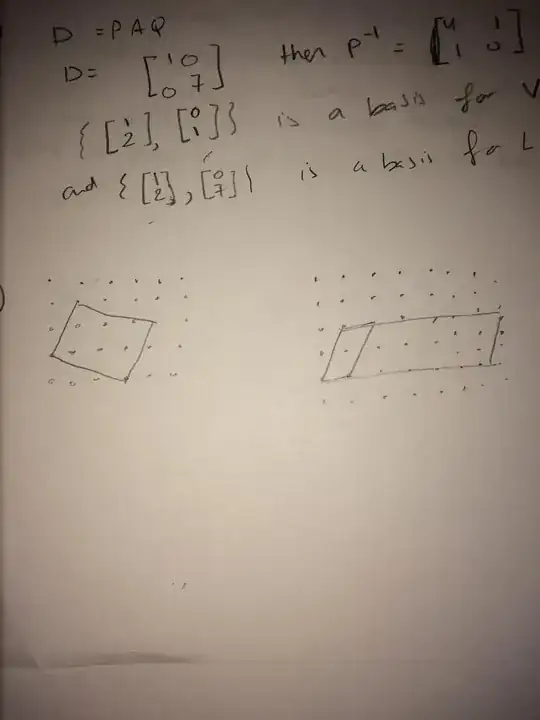The row and column operations you use in computing the Smith normal correspond to invertible matrices $P,Q \in \operatorname{GL}_2(\mathbb{Z})$ such that
$$
D = PAQ
$$
where $D$ is the diagonal matrix you found. (Since $-1$ is invertible in $\mathbb{Z}$, we can actually take $D$ to be
$$
D = \begin{pmatrix} 1 & 0\\ 0 & 7\end{pmatrix}
$$
which is what I will use for the rest of the answer.) In this case, I get
$$
D = \left(\begin{array}{rr}
1 & 0 \\
0 & 7
\end{array}\right)
\qquad
P = \left(\begin{array}{rr}
0 & 1 \\
1 & -4
\end{array}\right)
\qquad
Q =\left(\begin{array}{rr}
1 & 2 \\
1 & 1
\end{array}\right) \, .
$$
We can interpret these as change of basis matrices for $V$. (For more on this, see this post or this post.) The change of basis matrix $P$ contains the information we seek: since $P^{-1} = \begin{pmatrix} 4 & 1\\ 1 & 0\end{pmatrix}$, then the set $$
\{v_1, v_2\} = \left\{\begin{pmatrix} 4\\ 1\end{pmatrix}, \begin{pmatrix} 1\\ 0\end{pmatrix}\right\}
$$
is a basis for $V$ such that $L = v_1 \mathbb{Z} \oplus 7v_2 \mathbb{Z}$.
As for drawing the sublattice, take a look at pp. 4-5 of this set of notes by Keith Conrad. He draws a lattice and sublattice with respect to so-called unaligned and aligned bases, which I've copied below.


I think this is the sort of picture you have in mind. All right, below is my attempt at drawing the lattice $V$ and its sublattice $L$. The blue parallelograms are the fundamental parallelograms of $V$ and $L$ using my basis, and the red is the same for the book's. This shows quite clearly that both answers are correct.





